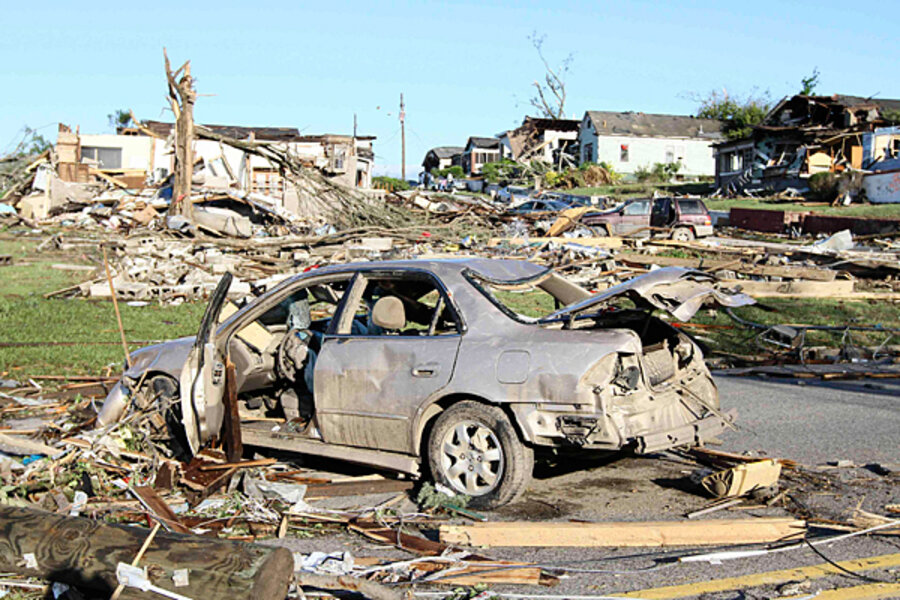Alabama tornadoes: Why was state's tornado death toll so high? (video)
Loading...
| Atlanta
As he commands search and rescue efforts in more than a dozen tornado-devastated Alabama counties, Gov. Robert Bentley is pushing back against the suggestion that the state – and its residents – were unprepared for what may become known as the most violent storm in Alabama history.
On Thursday, state officials expected the casualty toll to rise higher than the 131 deaths reported, as daylight allowed a more thorough search for the missing in vast areas of destruction.
Governor Bentley reminded reporters on Thursday that Alabama has a long history of deadly tornadoes. The state saw the greatest number of casualties in the 1974 "Super Tornado Outbreak," which killed 318 people across the US and Canada, with 77 perishing in Alabama. He added that "incessant" TV and radio coverage of the storm system had residents on high alert all day Wednesday. Most Alabama counties are equipped with tornado sirens, which sounded Wednesday.
"We were very prepared,... but it was just the force of the storms," Bentley said. "When a [large tornado] hits a highly populated area like Tuscaloosa, you cannot move thousands of people in five minutes. When an F4 or F5 tornado hits, there's not much you can do to change the outcome of that." As measured by a tornado ranking system, F4 and F5 tornadoes are the most intense, rated by the damage a tornado causes after passing over a manmade structure.
A system that spawned 137 tornadoes before moving toward the East Coast bore down on several Alabama cities Wednesday, including Tuscaloosa, Birmingham, and Huntsville, the state's aerospace capital. It forced the Tennessee Valley Authority to power down three nuclear reactors in Alabama as a precaution, as a plant in northern Alabama lost offsite power. As many as 1 million residents are without power – and hundreds, if not more, are without homes.
President Obama declared the state a national disaster area to leverage FEMA's resources to help Bentley organize search teams and start taking care of survivors, including housing and feeding them. FEMA Administrator Craig Fugate is slated to travel to Alabama Thursday to meet with Bentley and help take stock of the damage.
Though outside the western Plains area called "Tornado Alley," the South has its own "Dixie Alley" that has seen some of the largest long-track tornadoes on record, FEMA's Mr. Fugate said Thursday. In 1936, Mississippi and Georgia both saw death tolls rise above 200 after a tornado outbreak.
Tornado death tolls have continued to drop as forecasting and warning technology has improved. But as was the case two weeks earlier when a tornado outbreak killed 22 people in North Carolina, the strength, width, and mile-long-tracks of Wednesday's tornadoes overwhelmed the ability of the warning systems to safeguard residents.
"This is what hits us, this is what destroys so many homes and kills so many people," Bentley said. "This is not new to Alabama. We understand the force of a tornado."





